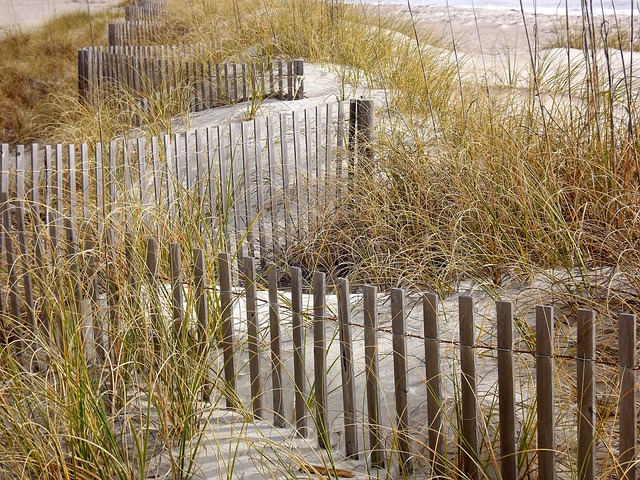Considering a vinyl fence installation in New Bedford, MA? This comprehensive guide is your one-stop resource. From understanding the diverse vinyl fence types suitable for New Bedford homes to exploring the manifold benefits of vinyl over traditional fences, we set the stage. We delve into selecting the ideal contractor, offering a detailed checklist for site preparation, and providing a step-by-step installation process. Additionally, we equip you with post-installation maintenance tips and common issues to anticipate.
- Understanding Vinyl Fence Types for New Bedford Homes
- Benefits of Choosing Vinyl Over Traditional Fences
- Selecting the Right Contractor for Installation in MA
- Pre-Installation Site Preparation Checklist
- Step-by-Step Guide to Vinyl Fence Installation Process
- Post-Installation Maintenance Tips and Common Issues
Understanding Vinyl Fence Types for New Bedford Homes
When considering vinyl fence installation in New Bedford, MA, understanding the various types available is crucial. Vinyl fences come in different styles, each offering unique aesthetics and functional benefits. The most common varieties include picket fences, known for their classic look with individual boards, and privacy fences designed to block off yards while allowing light penetration. Post-and-rail fences, featuring vertical posts connected by horizontal rails, provide a rustic charm often preferred for historical or country homes.
Additionally, vinyl fences can be tailored to match specific home styles. For instance, split rail fences evoke a natural, countryside feel, while board-on-board fences offer maximum privacy with solid panels. Lattice fences provide both visual appeal and airflow, making them suitable for areas requiring ventilation. Understanding these types enables homeowners in New Bedford to choose a fence that not only complements their property but also meets functional requirements.
Benefits of Choosing Vinyl Over Traditional Fences
When considering fence installation, many homeowners often ponder the advantages of vinyl over traditional materials like wood or chain-link. One of the key benefits of opting for vinyl fences is their durability and low maintenance requirements. Unlike wood, which can rot, crack, or require frequent painting and sealing to protect against the elements, vinyl fencing is incredibly resilient and resists decay, ensuring it maintains its integrity over time. This longevity translates into significant long-term savings.
Additionally, vinyl fences offer a wide range of aesthetic options. They come in various colors and styles, allowing homeowners to customize their outdoor space to match their preferences. From traditional privacy fences to decorative designs, vinyl provides an attractive alternative that can enhance the curb appeal of any property without breaking the bank. Moreover, these fences are virtually noise-proof, providing a quieter environment compared to chain-link or wooden barriers.
Selecting the Right Contractor for Installation in MA
When choosing a vinyl fence installation contractor in New Bedford, MA, it’s crucial to consider their expertise and reputation. Look for companies with a proven track record and satisfied customers in your area. Reputable contractors will have no issue providing references and examples of their past work. This ensures you get high-quality craftsmanship and a fence that meets your expectations.
Additionally, verify the contractor’s licensing and insurance to protect yourself from potential risks. Ensure they specialize in vinyl fence installation to guarantee the best results. Communication is key; choose a contractor who is responsive, transparent, and willing to answer all your questions throughout the process.
Pre-Installation Site Preparation Checklist
Before beginning any vinyl fence installation, proper site preparation is key to a successful and durable outcome. Here’s what to consider:
1. Clear the Area: Remove any plants, bushes, or debris within the designated fence line. Ensure there are no obstructions like trees or power lines that could interfere with the fence’s placement.
2. Level Ground: Check for any dips or uneven surfaces. Leveling the ground is crucial to ensure the fence posts are set at a consistent height and prevent future issues with stability. Use dirt, gravel, or compacted fill as needed to even out the area.
3. Mark the Perimeter: Re-establish the property lines and desired fence location using string, stakes, or spray paint. This step ensures the final fence aligns perfectly with your vision and legal boundaries.
4. Inspect Existing Structures: Check for any nearby structures like walls, fences, or decks that could impact the installation. Make sure there’s adequate clearance to allow for post placement and ensure the fence doesn’t encroach on neighboring properties.
Step-by-Step Guide to Vinyl Fence Installation Process
The vinyl fence installation process begins with measuring and marking the perimeter of your desired fence line, ensuring precise placement. Next, dig post holes at strategic locations using a post-hole digger, considering the required depth for stability. Place concrete in the holes to secure the fence posts, allowing it to set completely.
Once the concrete is cured, measure and cut vinyl fence panels to fit between posts, leaving a small gap for expansion. Install brackets on the posts to support the panels, then attach the panels using nails or screws, ensuring a secure fit. After completing the vertical sections, add the top rail, and finally, install any gates or accessories according to your design.
Post-Installation Maintenance Tips and Common Issues
After your vinyl fence is installed, proper maintenance will ensure its longevity and keep it looking pristine. Regular cleaning with a soft brush and mild detergent is recommended to remove any dirt or debris. Avoid using harsh chemicals as they can damage the vinyl. Inspecting your fence for loose panels, broken posts, or signs of rot is crucial. Addressing these issues promptly will prevent further damage.
Common problems post-installation include rust on metal components, fading or chipping of the vinyl, and misaligned panels. Rust can be mitigated by applying a protective coat of paint before installation. Fading or chipping might require repainting or replacing damaged sections. Regular tightening of screws and bolts will keep the fence secure and prevent misalignment.
